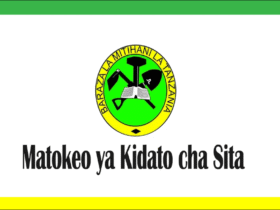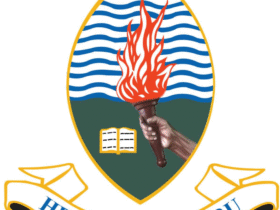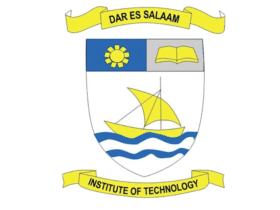Secondary Schools in Ruvuma , Ruvuma is a region in Tanzania that is home to a number of secondary schools. These schools offer education to students who have completed their primary education and are looking to further their studies. The region boasts both government and private secondary schools, with a total of 206 O-level schools, 152 of which are government-owned and 54 of which are privately owned.
The Ministry of Education, Science and Technology is responsible for managing and coordinating the provision of education in Tanzania, from primary to higher education. The education system in Tanzania is based on the 2-7-4-2-3+ structure, which includes two years of pre-primary school, seven years of primary school, four years of ordinary (lower) secondary school, two years of advanced (upper) secondary school, and at least three years of higher education (tertiary level). The secondary schools in Ruvuma offer education to students in the four years of ordinary (lower) secondary school and two years of advanced (upper) secondary school.
This article will provide a comprehensive list of secondary schools in Ruvuma, including both government and private schools. It will also provide information on the combination of subjects offered at each school, as well as any other relevant information for students and parents who are looking to enroll in a secondary school in the region.
Secondary Schools in Ruvuma Region
Educational System Structure
Tanzania follows a 7-4-2-3 educational system structure, which means that primary education lasts for seven years, followed by four years of secondary education, two years of advanced level education, and three years of tertiary education. Secondary education is further divided into two levels: Ordinary Level (O-Level) and Advanced Level (A-Level).
Number of Secondary Schools
According to the search results, there are a total of 206 secondary schools in Ruvuma region. Out of these, 152 are government-owned and 54 are privately owned. The number of O-Level schools in Ruvuma region is 206, which includes both government and private schools.
The Matokeo website provides a summary analysis of exam results for Ruvuma secondary schools. The website lists several schools in Ruvuma, including Ruvuma Secondary School, Narwi Secondary School, Unberkant Secondary School, and Ligoma Secondary School.
Overall, Ruvuma region has a significant number of secondary schools, both government and private, providing students with access to education and opportunities for personal growth.
List of Secondary Schools in Ruvuma
S4751 – Narwi Secondary School
S4804 – Unberkant Secondary School
S4853 – Ligoma Secondary School
S4870 – Lukala Secondary School
S4952 – Mpepo Secondary School
S5084 – Barabarani Secondary School
S0153 – Songea Boys Secondary School
S0157 – Hanga Seminary
S0217 – Peramiho Girls Secondary School
S0234 – St. Luise Mbinga Girls Secondary School
S0237 – St. Agnes Chipole Secondary School
S0484 – Mkinga Secondary School
S0537 – St. Paul’s Liuli Secondary School
S0540 – Maposeni Secondary School
S0590 – Wilima Secondary School
S0593 – Hagati Secondary School
S0594 – Frankweston Secondary School
S0595 – Ruvuma Secondary School
S0685 – Namabengo Secondary School
S0751 – Ruhuwiko Secondary School
S0768 – St. Benedict Secondary School
S0815 – Mbinga Secondary School
S0827 – Masonya Secondary School
S0842 – Litembo Secondary School
S0882 – Songea Muslim Seminary
S0968 – Mataka Secondary School
S1001 – Mbesa Secondary School
S1186 – Makita Seconadry School
S1199 – Madaba Secondary School
S1220 – Msamala Secondary School
S1279 – Luegu Secondary School
S1318 – Nandembo Secondary School
S1395 – Taifa Foundation Secondary School
S1430 – Kiuma Secondary School
S1454 – Londoni Secondary School
S1529 – Centenary Secondary School
S1627 – Namasakata Secondary School
S1719 – Nasuli Secondary School
S1758 – Mgomba Day Secondary School
S1832 – Mkoha Secondary School
S1851 – Mbambi Secondary School
S1987 – Wino Secondary School
S2072 – Mgombasi Secondary School
S2074 – Msindo Secondary School
S3131 – Limbo Secondary School
S3242 – Bombambili Secondary School
S3244 – Matogoro Secondary School
S3245 – Mashujaa Secondary School
S3247 – Zimanimoto Secondary School
S3248 – Mfaranyaki Secondary School
See also : List of Top Schools in Kilimanjaro Region 2024
S3129 – Kihangi Mahuka Secondary School
S3130 – Kitura Secondary School
S3142 – Liganga Secondary School
S3243 – Mdandamo Secondary School
S3246 – Subira Secondary School
S3411 – Monica Mbega Secondary School
S3412 – Nyoni Secondary School
S3413 – Liparamba Secondary School
S3417 – Kindimba Secondary School
S3419 – Mtakanini Secondary School
S3420 – Rwinga Secondary School
S3421 – Lukimwa Secondary School
S3422 – Magazini Secondary School
S3428 – Nalasi Secondary School
S3429 – Semeni Secondary School
S3430 – Marumba Secondary School
S3451 – Daraja Mbili Secondary School
S3452 – Lipupuma Secondary School
S3455 – Chandarua Secondary School
S3456 – Mbulani Secondary School
S3457 – Mkomalile Secondary School
S3493 – Mkwaya Secondary School
S3529 – Mkako Secondary School
S3544 – Ligunga Secondary School
S3563 – Kimolo Secondary School
S3577 – Ngumbo Secondary School
S3580 – Wukiro Secondary School
S3618 – Ndela Secondary School
S3682 – Kilumba Secondary School
S3730 – Mbamba Bay Secondary School
S3748 – Mango Secondary School
S3756 – Namswea Secondary School
S3939 – Miparu Secondary School
S4012 – Namanditi South Secondary School
S4018 – Mateka Secondary School
S4086 – Magingo Secondary School
S4132 – Namihoro Secondary School
S4145 – Lisimonji Secondary School
S4180 – Kikolo Secondary School
S4293 – Kilepile Secondary School
S4494 – Mtazamo Secondary School
S4495 – Malindindo Secondary School
S4544 – Mtutura Secondary School
S4650 – Utwango Secondary School
S4654 – Mwaliko Secondary School
S4664 – Luna Secondary School
S4665 – Skillpath Secondary School
S4698 – Korido Secondary School
S4699 – Muhuwesi Seminary
S4704 – Namwinyu Secondary School
S4751 – Narwi Secondary School
S4804 – Unberkant Secondary School
S4853 – Ligoma Secondary School
S4870 – Lukala Secondary School
S4952 – Mpepo Secondary School
S5084 – Barabarani Secondary School
S0153 – Songea Boys Secondary School
S0157 – Hanga Seminary
S0217 – Peramiho Girls Secondary School
S0234 – St. Luise Mbinga Girls Secondary School
S0237 – St. Agnes Chipole Secondary School
S0484 – Mkinga Secondary School
S0537 – St. Paul’s Liuli Secondary School
S0540 – Maposeni Secondary School
S0590 – Wilima Secondary School
S0593 – Hagati Secondary School
S0594 – Frankweston Secondary School
S0595 – Ruvuma Secondary School
S0685 – Namabengo Secondary School
S0751 – Ruhuwiko Secondary School
S0768 – St. Benedict Secondary School
S0815 – Mbinga Secondary School
S0827 – Masonya Secondary School
S0842 – Litembo Secondary School
S0882 – Songea Muslim Seminary
S0968 – Mataka Secondary School
S1001 – Mbesa Secondary School
S1186 – Makita Seconadry School
S1199 – Madaba Secondary School
S1220 – Msamala Secondary School
S1279 – Luegu Secondary School
S1318 – Nandembo Secondary School
S1395 – Taifa Foundation Secondary School
S1430 – Kiuma Secondary School
S1454 – Londoni Secondary School
S1529 – Centenary Secondary School
S1627 – Namasakata Secondary School
S1719 – Nasuli Secondary School
S1758 – Mgomba Day Secondary School
S1832 – Mkoha Secondary School
S1851 – Mbambi Secondary School
S1987 – Wino Secondary School
S2072 – Mgombasi Secondary School
S2074 – Msindo Secondary School
S3131 – Limbo Secondary School
S3242 – Bombambili Secondary School
S3244 – Matogoro Secondary School
S3245 – Mashujaa Secondary School
S3247 – Zimanimoto Secondary School
S3248 – Mfaranyaki Secondary School
Admission and Enrollment Procedures
Admission Requirements
To be admitted to a secondary school in Ruvuma, students must meet certain requirements. These requirements vary depending on the school, but typically include the following:
- Students must have completed primary school and passed their Primary School Leaving Examination (PSLE).
- Students must meet the age requirements set by the Ministry of Education, Science and Technology.
- Students must provide their birth certificate or other official identification documents.
- Students must have a good academic record and pass the entrance exam administered by the school.
Enrollment Process
Once a student meets the admission requirements, they can begin the enrollment process. The enrollment process typically involves the following steps:
- Obtain an application form from the school or download it from the school’s website.
- Fill out the application form completely and accurately.
- Submit the application form along with any required documents, such as the student’s birth certificate and academic transcripts.
- Pay the enrollment fee, which varies depending on the school.
- Wait for the school to process the application and notify the student of their acceptance or rejection.
It is important to note that some schools have limited enrollment capacity and may not be able to accept all applicants. In addition, some schools may give priority to students who live within a certain geographic area or who have siblings already attending the school.
Overall, the admission and enrollment procedures for secondary schools in Ruvuma are straightforward and transparent. By meeting the admission requirements and following the enrollment process, students can secure a place at one of the many excellent secondary schools in the region.
See also ; List of Secondary Schools in Kilimanjaro region 2024
Challenges Facing Secondary Schools in Ruvuma
Secondary education is an important part of the education system in Ruvuma, Tanzania. However, like many other parts of the world, secondary schools in Ruvuma face a number of challenges that impact the quality of education they can provide to their students. This section discusses some of the main challenges facing secondary schools in Ruvuma.
Infrastructure Issues
One of the major challenges facing secondary schools in Ruvuma is inadequate infrastructure. Many schools in the region lack basic facilities such as classrooms, laboratories, and libraries. This makes it difficult for teachers to provide quality education to their students. In some cases, students are forced to share classrooms, which can lead to overcrowding and a lack of focus. Additionally, some schools lack proper sanitation facilities, which can lead to health problems for students and staff.
Quality of Education
Another major challenge facing secondary schools in Ruvuma is the quality of education. Many schools lack qualified teachers, which can lead to a lack of proper instruction and guidance for students. Additionally, some schools lack proper teaching materials, such as textbooks and other resources, which can make it difficult for teachers to properly teach their subjects. This can lead to a lack of motivation among students and a lack of interest in education.
In conclusion, secondary schools in Ruvuma face a number of challenges that impact the quality of education they can provide to their students. Addressing these challenges will require a concerted effort from the government, educators, and other stakeholders. By working together, it is possible to improve the quality of education in Ruvuma and provide students with the tools they need to succeed in life.
Development and Future Prospects
Government Initiatives
The government of Ruvuma has been working hard to improve the quality of secondary education in the region. According to a recent report by the Daily News, the region has established 11 new secondary schools worth 7.7 billion Tanzanian shillings in just one and a half years, thanks to the Secondary Education Quality Improvement Project (SEQUIP). This initiative has been instrumental in increasing access to education for students in the region, particularly in rural areas.
The Tanzanian government has also been investing in school feeding programs to improve academic performance in schools. In Ruvuma, the USAID’s Tusome Pamoja (“Let’s Read Together”) activity has been implemented to provide school meals to students. This program has been successful in reducing student absenteeism and improving academic performance in primary schools .
Community Involvement
Community involvement has been crucial in the development of secondary education in Ruvuma. The establishment of advanced government secondary schools has been a collaborative effort between the government and local communities. According to Dukarahisi, a local news outlet, the education system in Ruvuma has been inherited from one generation to another, with learning materials being divided into groups and provided by adults at home, work, and other community settings .
The government has also been working with local communities to improve infrastructure in schools. For example, the Ruvuma Regional Commissioner Office has provided contact information for reporting school infrastructure issues, such as damaged classrooms or lack of water supply, to ensure that schools are safe and conducive to learning .
In conclusion, the government of Ruvuma has been making significant strides in improving secondary education in the region through initiatives such as SEQUIP and school feeding programs. Community involvement has also been instrumental in the establishment of advanced government secondary schools and the improvement of school infrastructure. These efforts are expected to continue to improve the quality of education and increase access to education for students in the region.
Recommended
- List of Secondary Schools in Simiyu Region 2024
- List of Secondary Schools in Ruvuma region 2024
- List of Secondary Schools in Mtwara region 2024
- List of Top Schools in Kilimanjaro Region 2024
- List of Secondary Schools in Mwanza Region 2024
- List of Secondary Schools in Mbeya Region 2024
Thank you for reading our article to the end, if you have any questions please leave a comment below or you can Contact us. Don’t forget to join us on WhatsApp and Telegram For more updates.
Usaili.com team is dedicated to making sure you stay updated.
Join Our Telegram Group for Daily Updates
CLICK HERE









3 Comments
View Comments